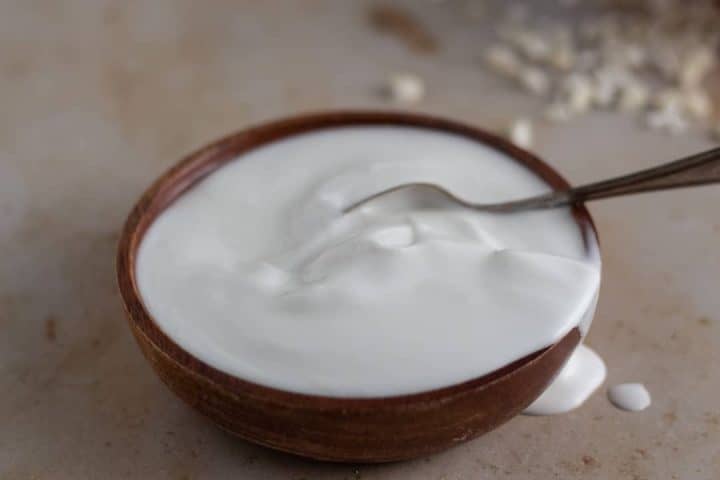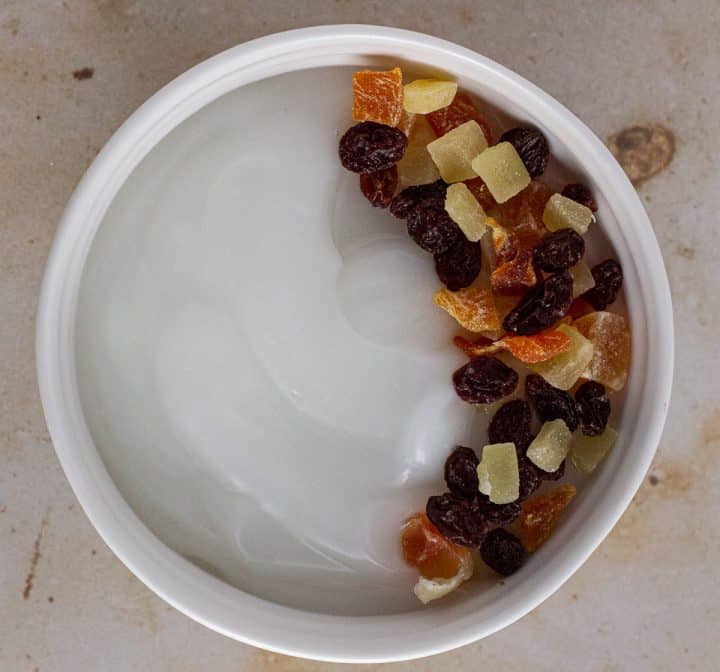Ogi is a fermented food with custard-like consistency which is eaten across West Africa. It is called pap in English. It could be made from corn, millet or sorghum; and is also known as koko, oka and akamu, depending on what parts of the region you are. This post will show you how to make ogi from the scratch at home, using corn.

This corn porridge is one of the most popular cereal gruel in that part of the world and is the West African version of breakfast porridge. It is widely used for weaning babies and one of the go-to foods for breaking fast in the month of Ramadan because it is believed to be easy on the stomach.
The production of ogi involves soaking the grains for a few days, wet milling followed by fermentation to develop a slightly sour taste. The resulting paste is cooked to make a gruel, which is served hot, usually with akara (bean fritters), moimoi (steamed bean cake) or simply with sugar and evaporated milk drizzled on top. In the Western parts of Nigeria, the Ogi is to allowed to cook for longer; then cooled to make “eko” or “agidi”; which is eaten cold; with soup.

Here's What You Need To Make Ogi/Akamu

Corn: You need dry corn to make Ogi. I used cracked hominy corn for this recipe, because it was the only dried corn I could find. Hominy corn is corn kernels which have been soaked in alkali to remove the tough hull and the germ. It is commonly used in Mexican cooking. Spruce Eats have a detailed article about this corn if you would like to know more.
I tried popcorn, but after 5 days of soaking, it was still so hard there was no way I could grind it in my blender. If you are in other parts of the world where dried corn is in abundance, then by all means use it. You can find hominy corn in Asian and African shops. You can also find it on the Mexican aisle of some major supermarkets in the UK.
How To Make Ogi/Akamu
Wash the corn and soak in a generous amount of water to soften. Make sure the water covers the corn.
Change the water on day 2, and continue to soak for another day. Allow to soak for 3 days in total.

This is what you would see on day 3. Don’t mind the bubbles, it shows that fermentation is beginning to happen and you should be getting some of the distinctive ogi aroma.
Rinse the corn in fresh cold water and pour in the blender.

Grind until you achieve a smooth paste.

Add some water to the paste and strain out the smooth paste from the chaff by sieving with a cheese cloth or muslin. You can blend the chaff again to get more starch out. Just sieve like before.

Squeeze the cheese cloth to release the ogi into the bowl underneath the bowl. At the end of sieving, the chaff will be left inside the cheese cloth.

Keep the resulting paste in a covered bowl to ferment. Soon the solid will settle to the bottom, while the liquid is at the top.


Leave this for between 1-3 days, depending on how tart you want the ogi to be. Tip out the water and add fresh water after 24hrs. This will help to control the fermentation.

At the end of the fermentation, skim off the excess water and keep your ogi in the fridge. If you prefer to drain the ogi further, then pour in a cheese cloth or muslin and squeeze the liquid out. I tend to skip that part because I would need to add water back to make the gruel.
The finished ogi should look like this...

Recipe Notes
Blender: You need a powerful blender to mill the corn for pap. In part of the world where this food originated; commercial grinders which can handle hard grains are used.
Fermentation – The characteristic sour taste of ogi is a result of fermentation. The length of time that the corn is soaked for as well as how long the paste is allowed to ferment will determine how tart the final product is.
Colour: The colour of the pap depends on the colour of the corn used. White corn will give white colour while yellow corn gives a creamy or light yellow colour.

Final thoughts - this post is for people who do not have access to good ogi either brought from a shop or ground on the commercial machine. The yield of ogi at the end was around one-third of the corn I started out with, which I thought was quite wasteful.

[…] Ogi (pap) […]